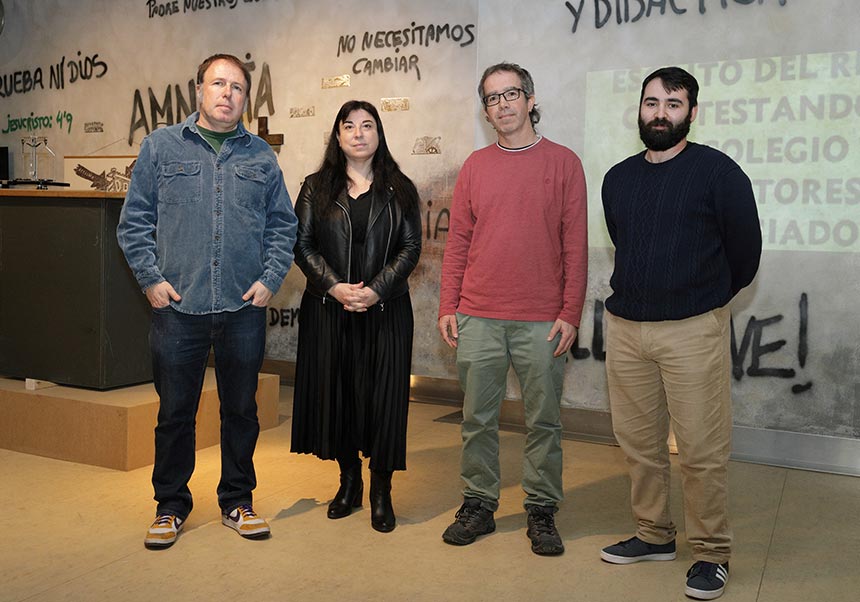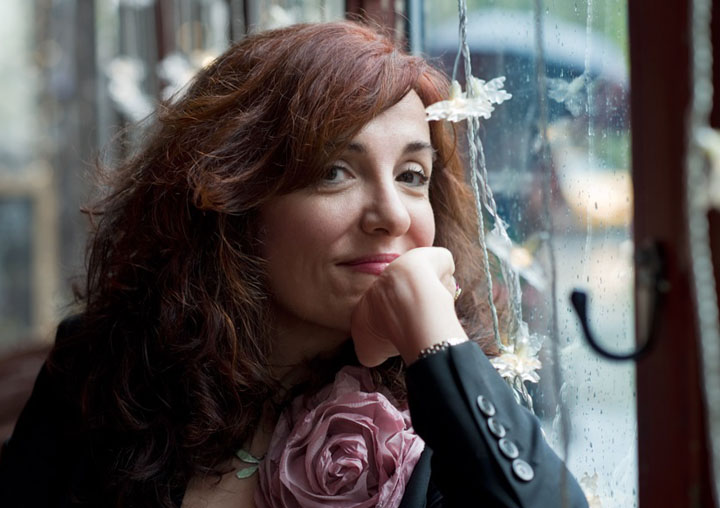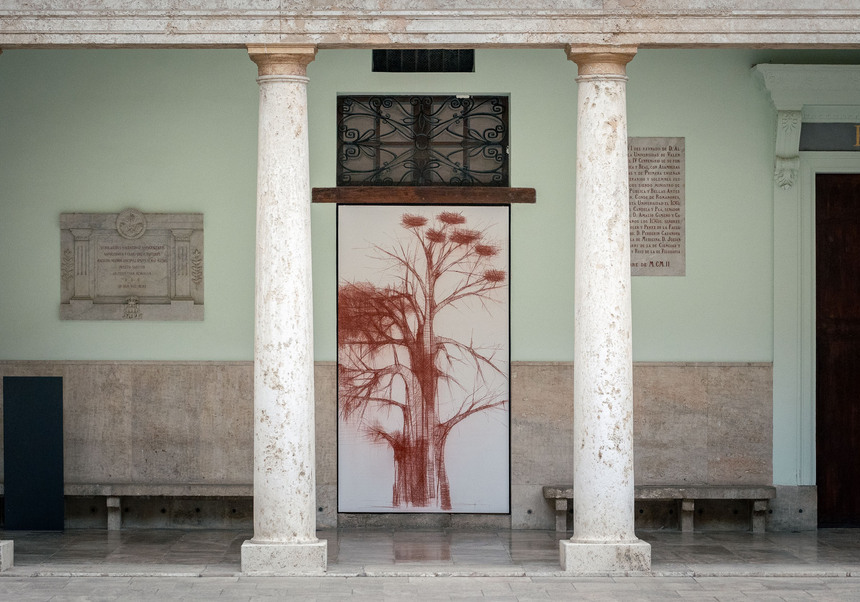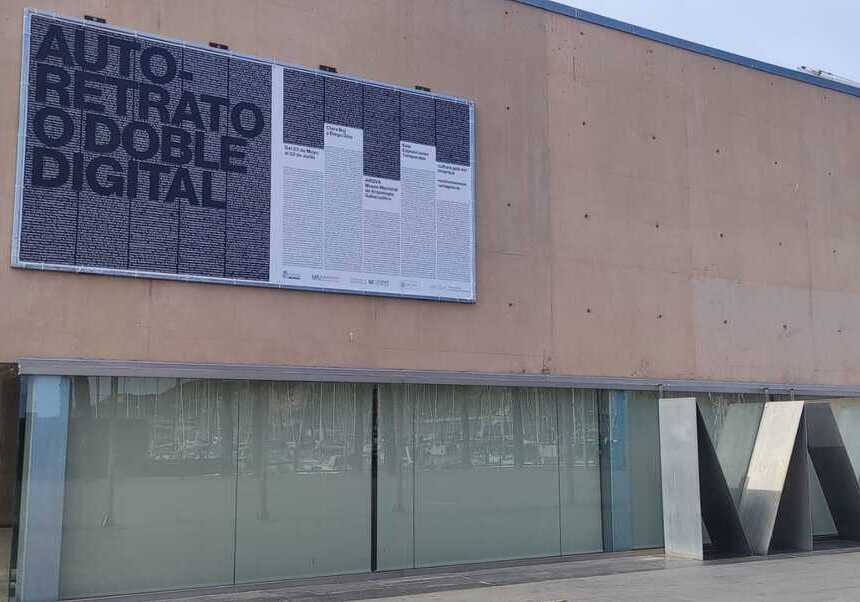The Universitat de València presents at the Palau de Cerveró an exhibition on the role of the science classrooms in the Spanish transition to democracy
- University Culture Service
- March 26th, 2024

The Universitat de València presents at the Palau de Cerveró the exhibition ‘Transición pedagógica: Ciencia, experiencia y libertad’, which explores the mobilisation of a new democratic culture through science classrooms. It focuses on school scenes, material devices, audiovisual landscapes, and both pedagogical and political debates.
The exhibition was inaugurated Tuesday, 26 March at the Palau de Cerveró of the Universitat de València, which is headquarters to the López Piñeiro Inter-university Institute, with participation from the Vice-Principal for Culture and Society, Ester Alba, the director of the López Piñeiro Inter-university Institute, Ximo Guillem, and the curators of the exhibition, Josep Simón, Ramón y Cajal researcher and responsible for the medical-scientifical collections of the Universitat de València and Anxo Vidal, doctoral student.
The exhibition examines science classrooms as a fundamental space for political changes during the Spanish transition to democracy. It covers the period from post-war Francoism to the consolidation of the democratic system, with a particular focus on the pivotal time period between late Francoism (1962–1975) and the early transition to democracy (1975–1982).
Organised by the Office of the Vice-Principal for Culture and Society and the López Piñeiro Inter-university Institute, the exhibition is made up of more than fifty works from a variety of institutions: the Museu d’Història de la Medicina i de la Ciència (Universitat de València); the Museu d’Història de l’Escola (Universitat de València), the Vicent Peset Llorca Library, the IES Sant Vicent Ferrer de València, the José Luis Borbolla Workers Union Historical Archive of CC OO and the López Piñeiro Inter-university Institute itself.
The exhibition revolves around three thematic axes through which the generation of change is represented and communicated: teaching practices, pedagogical tools and didactic debates. The essential friction in these three core themes is highlighted in science classrooms. Human agents (teachers, “captive” students, educational institutions, government bodies and families) are combined with material resources (textbooks, pedagogical press, student and teacher notebooks, furniture, scientific instruments, didactic equipment, wall posters, blackboards, projectors and other audiovisual tools), as well as ideological resources (pedagogical philosophy, social epistemology and political regime).
According to the curators, the objectives of the exhibition are “to connect the history of the teaching of science, to value the museological work through the recovery of different works and materials and to recover the scholarly collections of the last century, which are part of our heritage, claiming their vale in this field through their recovery and exhibition to the public”. Also, an extensive programme of complementary activities has been prepared, including workshops and guided tours, especially prepared for students of Bachillerato (Spanish upper secondary school education) and secondary education, allowing them to interact with exhibited materials.
In addition to the large quantity and diversity of pieces, according to Ester Alba, the exhibition stands out for its “amazing and immersive” museographical montage, which recreates the educational environment of the time. In this way, the room is limited by a large wall, created purposefully for this exhibition, where one can read actual and documented graffiti of this transition period, as well as others created through historical education slogans. At the centre of the room, in the shape of a “heart”, point out the curators, since it is an emblematic experiment, is highlighted a ripple tank, so that the students can see the physical principles that this object allows one to witness.
The Pedagogical Transition aimed to reform the educational guidelines established during the Franco regime. These guidelines had been weakened due to various factors, including the purge of teachers, political bias, economic and social crises following the war, autarchic economic policies, authoritarian and dogmatic teaching, lack of pedagogical and scientific resources, erasure of scientific and didactic contributions achieved during the Second Spanish Republic and isolation from the international context. From the 1960s onwards, the Franco regime repositioned itself in the international diplomatic framework by renewing its relationship with the USA. As a result, new tools promoted by the OECD were progressively introduced, including the translation of textbooks from elite American universities into Spanish. However, these measures did not solve the Spain’s serious educational issues. During the late 1960s, amidst increasing student and citizen protests against the Franco regime, groups such as the Seminario de Pedagogía del Colegio Oficial de Doctores y Licenciados de Valencia were established. These groups were composed of young graduates seeking professional opportunities in secondary education, and they started to develop a new approach to science education. Many of the members of these groups later played out important roles in educational practices and organisation, promoting the professionalisation of science education through universities, unions and regional governments.
‘Transición Pedagógica’ analyses the relationship between education, science and democracy by focusing on science education during the Spanish transition to democracy. The exhibition is interactive and aims to prompt reflection, as science has always done, on citizenship-related issues. The exhibition can be visited at the Palau de Cerveró of the Universitat de València until 25 October.
File in: Cultura , Exposicions , Palau de Cerveró

















